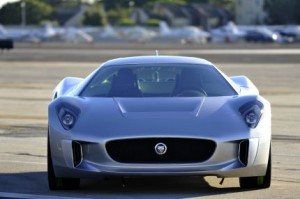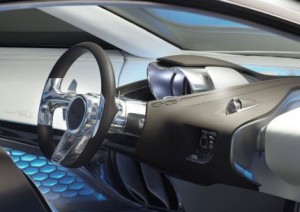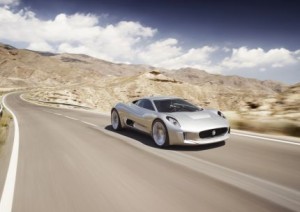 Jaguar announced in May plans to move forward with stunning C-X75 concept car by building 250 examples of the supercar.
Jaguar announced in May plans to move forward with stunning C-X75 concept car by building 250 examples of the supercar.
Everything about the Jaguar halo car is extreme and innovative from the 200 mph plus top speed to the electric drivetrain to the price tag which is expected to be in the $1.2 to $1.5 million range.
 Jaguar C-X75 will become the British marque?s most advanced model to date. It will offer performance on a par with the fastest production cars on the market, while adopting cutting-edge technology that offers remarkably economical running. Jaguar expects this hybrid supercar to deliver incredibly low CO2 emissions of less than 99g/km while being able to achieve in excess of 200mph.
Jaguar C-X75 will become the British marque?s most advanced model to date. It will offer performance on a par with the fastest production cars on the market, while adopting cutting-edge technology that offers remarkably economical running. Jaguar expects this hybrid supercar to deliver incredibly low CO2 emissions of less than 99g/km while being able to achieve in excess of 200mph.
?People expect Jaguar to be innovators – that is when Jaguar is at its best,? said Adrian Hallmark, Jaguar Brand Director. ?The C-X75 received an incredible reception as a concept car. We?ve been building on that momentum and there is a clear business case for this exclusive halo model. No other vehicle will better signify Jaguar?s renewed confidence and excellence in technological innovation than this.?
 In an unprecedented move, Jaguar C-X75 will be developed in association with Williams F1 who will provide their engineering expertise in areas including aerodynamics, carbon composite manufacture and hybrid technologies. This association will be at the leading edge of British automotive engineering and innovation.
In an unprecedented move, Jaguar C-X75 will be developed in association with Williams F1 who will provide their engineering expertise in areas including aerodynamics, carbon composite manufacture and hybrid technologies. This association will be at the leading edge of British automotive engineering and innovation.
A direct technology transfer between elite motorsport and road-going production cars is key to C-X75?s success. The supercar?s chassis will be made of carbon-fiber to create an incredibly lightweight, yet rigidly strong structure.
Aiding the transition from concept to production vehicle is the choice of powertrain. Jaguar continues to develop the use of the micro-turbine technology that was showcased in the original concept C-X75. Jaguar?s parent company Tata has taken a significant stake in Bladon Jets, and will develop this very advanced technology as a medium-term aspiration that will play a part in Jaguar vehicles of the future.
 To bring Project C-X75 to showroom reality within the timescales of a conventional model program, an equally innovative powertrain had to be developed. The road-going supercar will use a state-of-the-art, small-capacity, highly-boosted internal combustion engine with one powerful electric motor at each axle.
To bring Project C-X75 to showroom reality within the timescales of a conventional model program, an equally innovative powertrain had to be developed. The road-going supercar will use a state-of-the-art, small-capacity, highly-boosted internal combustion engine with one powerful electric motor at each axle.
?The engine?s compact size allows it to be mounted low in the car for optimum weight distribution and to retain the concept?s stunning silhouette. This will make the Jaguar C-X75 a bona fide hybrid supercar capable of silent electric running with an extensive EV range in excess of 50km,? explained Bob Joyce, Group Engineering Director, Jaguar Land Rover.
When C-X75?s motors and combustion engine combine, it will be one of the fastest production cars in the world, with a sub-three second 0-60mph time and a top speed in excess of 200mph. Crucially, this performance will be generated alongside incredibly low emissions, with a target of less than 99g/km CO2, thanks to Project C-X75?s lightweight construction and cutting-edge powertrain technology.
 ?We were always determined that the Jaguar C-X75 would be as striking on the road as it was in concept form,? said Ian Callum, Director of Design, Jaguar Cars. ?This will be the finest looking and most innovative Jaguar ever produced. Even in the world of supercars, we can still produce the most beautiful.?
?We were always determined that the Jaguar C-X75 would be as striking on the road as it was in concept form,? said Ian Callum, Director of Design, Jaguar Cars. ?This will be the finest looking and most innovative Jaguar ever produced. Even in the world of supercars, we can still produce the most beautiful.?








